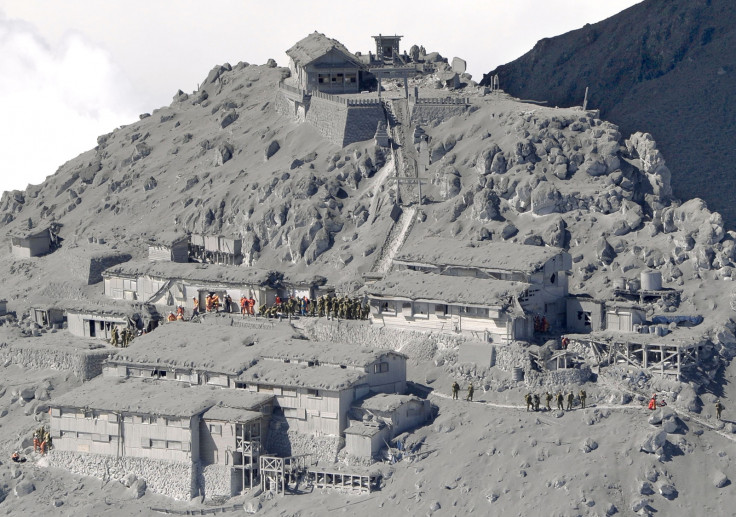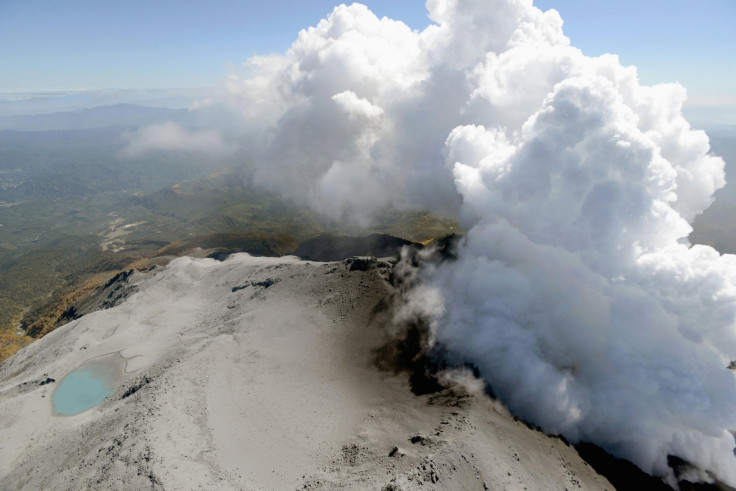Japan Volcano: Mount Ontake Eruption 'Could Not Have Been Predicted nor Deaths Prevented'

The eruption at Japan's Mount Ontake volcano that has so far killed at least 36 people could not have been predicted nor their deaths prevented, an expert has said.
Writing for the Conversation, University of Hull volcanologist Rebecca Williams has said the ability to predict volcanic eruptions is an ambition scientists are "far from realising".
Mount Ontake erupted on 27 September, with gas, ash and rocks sent shooting into the air. Search and rescue efforts are currently suspended following fears of another eruption and the presence of toxic gas.
Since the eruption, there have been several reports asking why it was not predicted and why hikers were allowed to venture to the summit.

Williams explained that Mount Ontake has only two known eruptions, once in 1979 and again in 2007. Before this, there were no recorded historical eruptions at the volcano.
Japan Meteorological Agency has seismometers around the volcano to record tremors. However, this information shows signs of magma movement underneath the volcano, but these signals can and do happen without an eruption taking place.
"Knowing what these signs mean for an individual volcano relies on data collected during previous eruptive episodes, as each volcano behaves differently. Mount Ontake has only had two known historical eruptions and previous to the 1979 eruption, had not been monitored, so scientists here had no previous data to work with," she said.
"Volcanic tremors are very common at active volcanoes and often occur without being associated with an eruption."

Williams also added that the type of eruption believed to have taken place at Mount Ontake suggests it was mostly steam. This indicates that magma was not directly involved in the eruption.
"Instead, it is likely water had seeped into the volcano and was superheated by magma within the volcano and flashed to steam causing what is known as a phreatic eruption. Phreatic eruptions occur without magma movement, hence the lack of precursor signals. The 2007 eruption was also phreatic and also occurred with little warning."
Echoing Williams' comments, a report in Nature magazine said any increase in seismic activity does not necessarily indicate a forthcoming eruption. Toshikazu Tanada, from Japan's National Research Institute for Earth Science and Disaster Prevention in Tsukuba, said: "It's a very quiet mountain."

If authorities had restricted access to the volcano as a result of the activity seen at Mount Ontake, Japan would have had to close over 10% of the country's volcanoes to visitors: "We could just restrict everywhere, but people don't want that," he said.
Williams said volcanoes are a popular attraction for tourists, and an eruption similar to that seen at Mount Ontake is possible at many of those most visited: "The events at Ontake were tragic. It's my opinion that it was a tragedy that could not have been predicted or prevented, given our current level of knowledge.
"Volcanoes are inherently dangerous places and there will always be risks to those who visit them. However, events like that at Ontake are thankfully rare. Laying the blame at the foot of either the hikers, or the authorities that allow tourists to visit active volcanoes would be misplaced."
© Copyright IBTimes 2024. All rights reserved.






